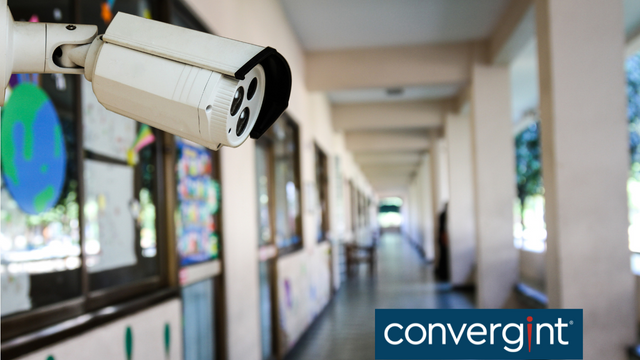
Michael Crutchley
Business Development Manager, Convergint
Convergint colleague Michael Crutchley is a Business Development Manager with over 25 years experience with life safety systems including fire alarms, mass notification systems, CCTV, and more. Crutchley recently published a three-part series discussing the benefits of integrating life safety and mass notification technology to prevent public violence with a complete system of response. Read the second installment of this series below, originally featured in Campus Safety Magazine.
Ensuring the safety of students and faculty is more important than ever. With concerns surrounding school and campus security increasing in light of recent tragedies, schools now face an urgency to re-evaluate their current security posture. With past active shooter situations involving improper use of fire alarm systems, for example, administrators should be turning their attention towards carefully assessing the balance between security and life safety systems. As the new school year approaches, it’s critical to keep the following considerations and strategies in mind to build a fully integrated system of response that protects returning students and staff.
Evaluating potential misuse of life safety systems
Past active shooter incidents provide an illustrative example of the balance that must be struck between life safety and security. In some cases, the assailant was able to utilize a fire alarm manual station as a part of their plan , it can increase the availability of potential targets and create an opening to escape during the ensuing chaos of students and staff exiting the facility.
These incidents have caused many to prioritize finding an equilibrium between security and safety concerns and emphasizes the need for early notification of occupants during an active fire event.
While the National Fire Alarm and Signaling Code (NFPA 72) permits the removal of most manual fire alarm stations, the initial impulse to do so is an overreaction. The complete removal of manual fire stations improperly addresses the security concern at the expense of increased danger from a fire event. Therefore, it’s critical to not discount the need for early notification in the case of an active fire event. Instead, administrators should consider fortifying existing fire safety systems to enhance overall security posture.
Utilizing existing infrastructure and technology
When it comes to enhancing existing fire systems, considering a modified alarm sequence can help mitigate the malicious use of manual alarm stations. Instead of reducing the number of manual stations altogether, as some have suggested, the usage of the Positive Alarm Sequence (PAS) should be considered. PAS allows for a 180-second delay in notifying emergency responders when a manual station is activated. Modifying response time has the power to prevent these systems from being used by assailants to distract or force the evacuation of faculty and students.
Upon entering the area of the active manual alarm situation, a responding security team must perform a manual override of the delay to enable evacuation of those in the building. Alternatively, performing no action within the 180-seconds of delay would initiate an evacuation, as would a second alarm device activation. In the event of accidental activation, the security team will be required to perform a reset of the device before automatic evacuation.
If the PAS is designed properly, such a function could be either enabled (turned on) or disabled (turned off) for various situations or events at the facility. It is important to note that, in the absence of security personnel or a fully staffed office for response, the PAS should not be activated. In many cases, the use of PAS can prove vital in improving overall security posture and preventing instances of forced evacuation within campus and school settings.
Designing a more robust security system
Aside from upgrading the functionality of fire safety solutions, several other systems are critical to consider to improve the overall security posture in and around facilities. In terms of improving response times and communication with law enforcement, integrators and school administrators should consider implementing panic alert systems in classrooms and offices. In the past several years, many states have approved “Alyssa’s Law,” making it mandatory for schools to implement a mobile panic alert system. These devices enable real-time communication between multiple first responder agencies and increase the rapidity of the notification process. Further, integrating automatically locking classroom doors, as well as automated lockdown systems at nearby schools, can provide an additional measure of positive control in a dynamic environment.
Another solution that should be considered is the use of gunshot detection systems. These systems identify the acoustical signature of weapon discharge with greater than 99.8% accuracy. Typically, these detectors can be spaced with the same coverage range as spot smoke detectors, although installation at specific areas of concern is sufficient in most cases to provide some form of coverage where none currently exists. The location of the detectors provides for calculated triangulation between devices to provide specific location information for the gunshot.
Integrators and administrators should carefully evaluate their own facility’s needs and devise an Emergency Response Plan (ERP), considering a multitude of factors including budget, student and faculty occupancy, and current security technology. Administrators must also consider the feasibility of these systems, potential risk, and the location of law enforcement.
When it comes to securing our schools, the right balance of fire safety systems, security technology, and communication devices can combine to create a fully integrated security system and a safer education environment for all.






